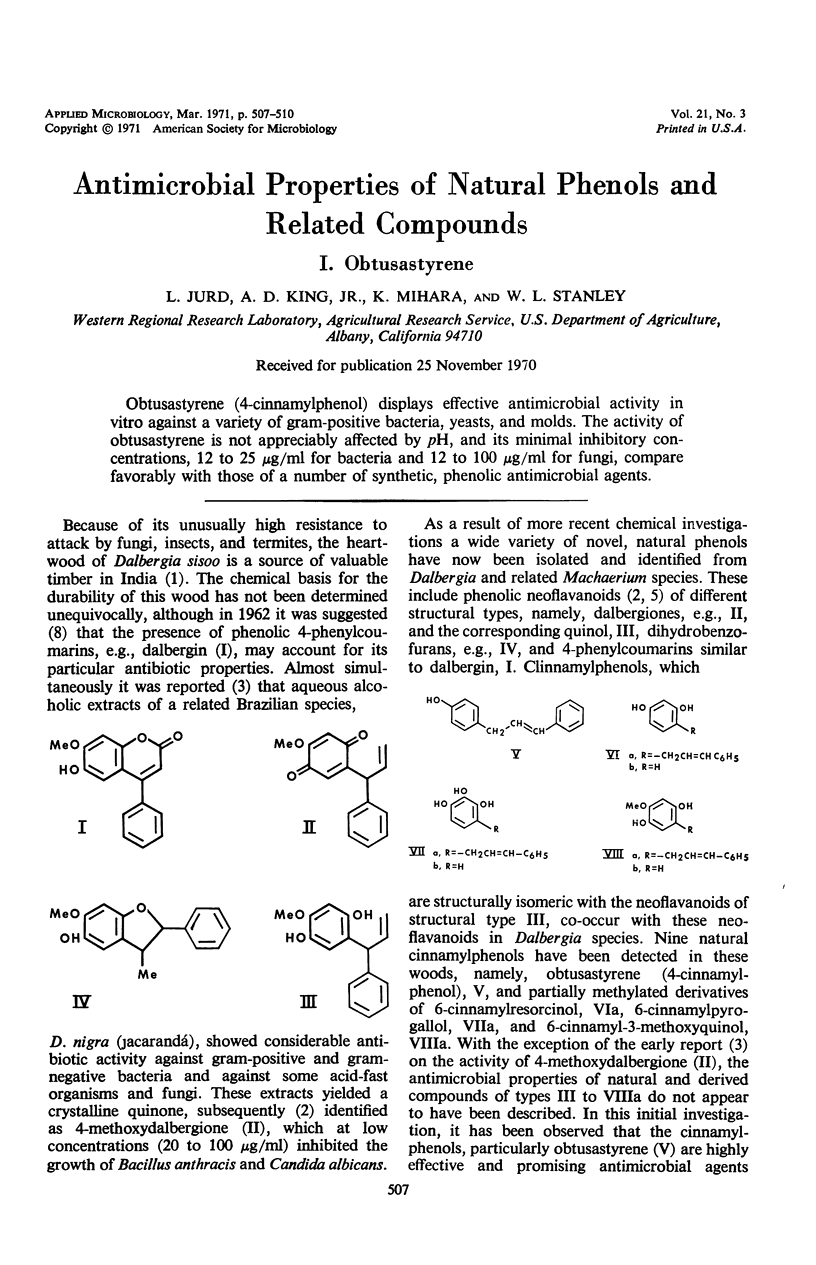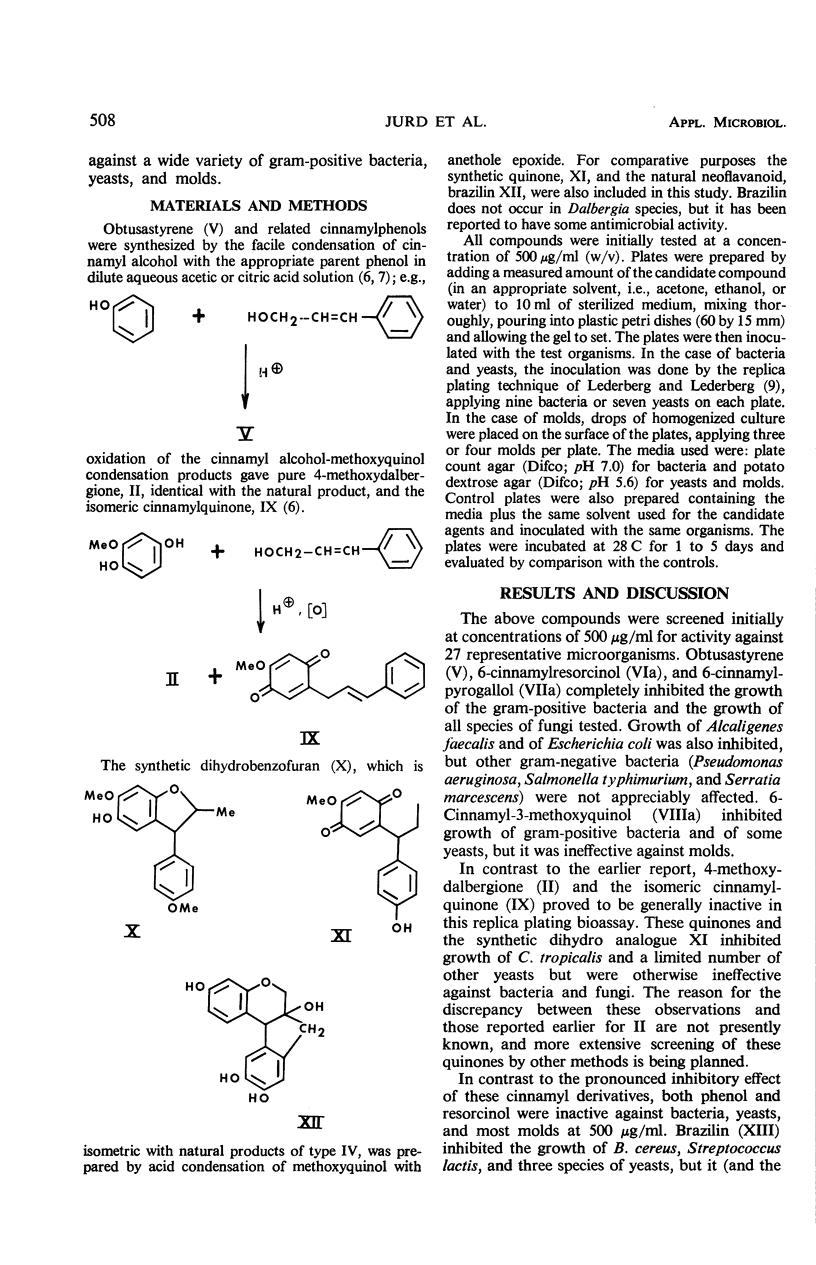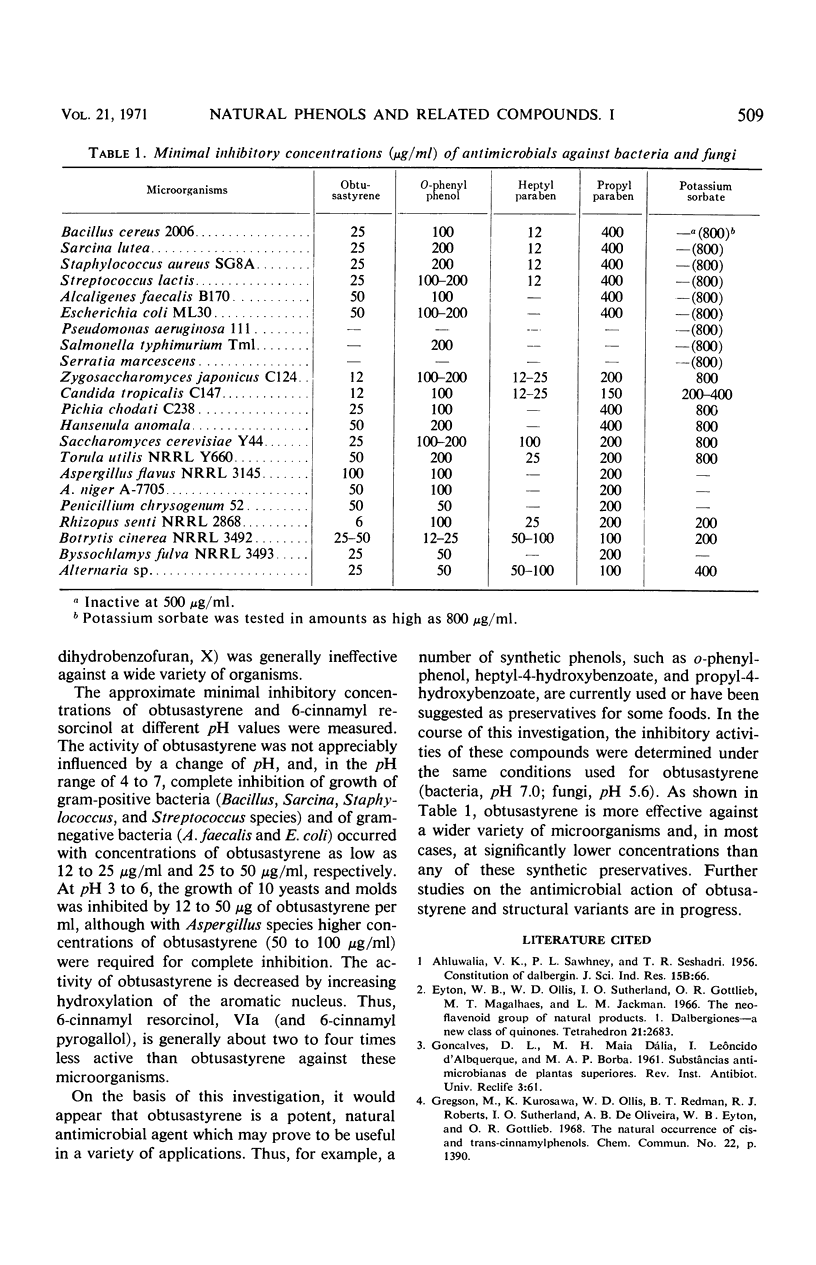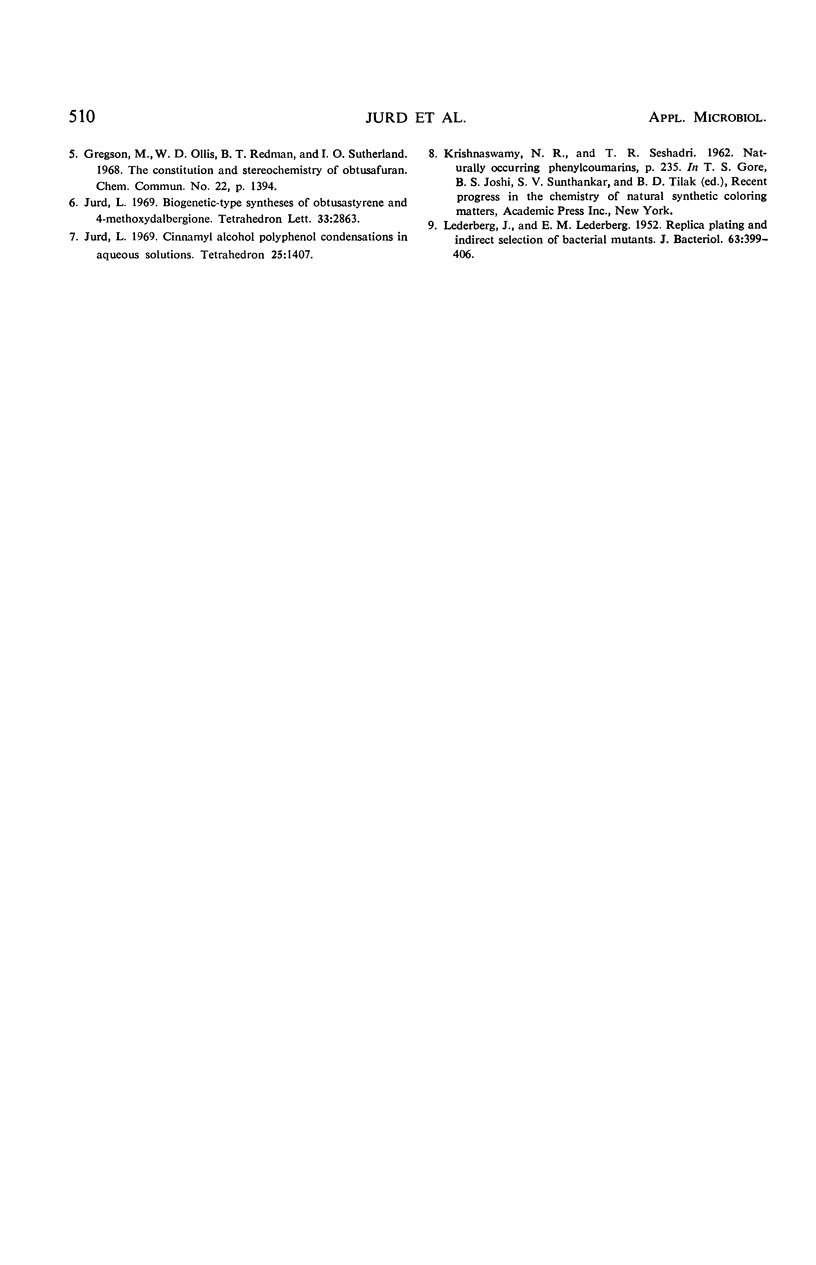Abstract
Obtusastyrene (4-cinnamylphenol) displays effective antimicrobial activity in vitro against a variety of gram-positive bacteria, yeasts, and molds. The activity of obtusastyrene is not appreciably affected by pH, and its minimal inhibitory concentrations, 12 to 25 μg/ml for bacteria and 12 to 100 μg/ml for fungi, compare favorably with those of a number of synthetic, phenolic antimicrobial agents.
Full text
PDF



Selected References
These references are in PubMed. This may not be the complete list of references from this article.
- Jurd L. Biogenetic-type syntheses of obtusastyrene and 4-methoxydalbergione. Tetrahedron Lett. 1969 Jul;(33):2863–2866. doi: 10.1016/s0040-4039(01)88293-9. [DOI] [PubMed] [Google Scholar]
- LEDERBERG J., LEDERBERG E. M. Replica plating and indirect selection of bacterial mutants. J Bacteriol. 1952 Mar;63(3):399–406. doi: 10.1128/jb.63.3.399-406.1952. [DOI] [PMC free article] [PubMed] [Google Scholar]


